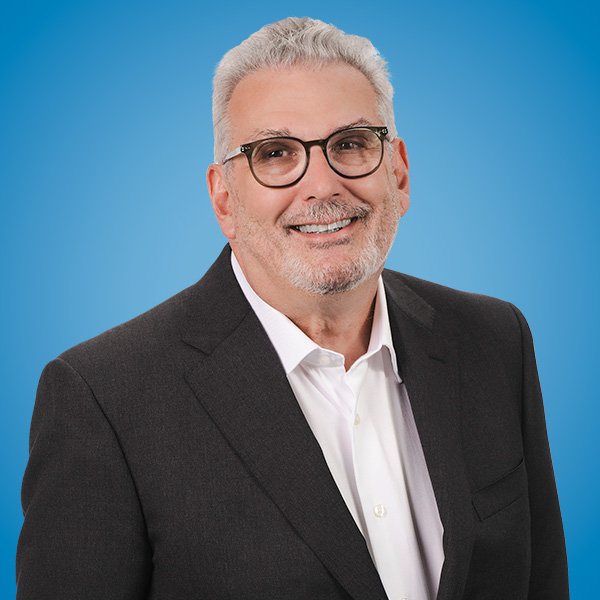If you think that there is a lot of talk about new factory construction in the United States in recent months, you are correct. Ryan Beene, a writer for Bloomberg News, noted last year that some in financial circles had predicted that the “fever” among American executives to shorten supply chains and bring production back to the United States would be short-lived as the pandemic faded. However, Beene, after reviewing earnings calls and conference presentations, found the trend to bring manufacturing back to the U.S. actually was accelerating. In 2022, the construction of new manufacturing facilities rose 116%. That dwarfs the 10% gain on all other building projects combined reported by Dodge Construction Network.
Given this current trend to build, modify or expand manufacturing facilities in the U.S., this article will briefly address some important factors to consider prior to beginning the construction of a manufacturing facility. As with most other construction projects, given supply chain issues, a dwindling construction workforce, volatile pricing and the fact that there is full employment in the construction sector in some parts of the country, proper planning is crucial. We would suggest that any owner contemplating construction of a manufacturing facility consider and address the following factors:
Site Selection
The first step to constructing a manufacturing plant is deciding where the facility is going to be located. This inquiry may seem as simple as picking a plot that is large enough and easily accessible, but there are many other factors that should be considered. For instance, do you foresee the potential for future expansion, and if so, does the current site provide enough space to do so? In addition to any factory and warehouse space, does the site meet the space needs of other aspects of the business that will be housed at the facility (research and development, administration, marketing, maintenance, security, etc.)? The owner may also want to ascertain if there is anything unusual about the site. For instance, there could be endangered species living in the area or have a unique environmental or climate issue in the locale. For example, the site could be located on a floodplain, or have extreme weather risks like hurricanes, earthquakes and forest fires.
It is also important to familiarize yourself with the permit approval process and consider any zoning issues. Is the local government one that is easy to work with and pro-business and development (or at least not anti-development)? Owners should also look into whether there are economic incentives, such as TIF funding, or rebates being offered by the local or state government or other available grants. It is also prudent to have an understanding of the area surrounding your intended project site. For example, are you in a location that will provide access to qualified workers who are reasonably close to your site? If not, is there housing nearby to host workers working on this project? Finally, consideration must be given to the local infrastructure and local utilities, and whether they are suitable for the demands of the construction as well as for the future operation of your facility. These considerations are also vital if you are retrofitting an existing structure instead of building from the ground up. It may seem less costly and quicker to work with a building already there, but the cost of adapting a building’s outdated or non-code-compliant features could end up costing you in the long run. It is important to make sure you are not trying to put a square peg in a round hole.
Risk Management and Insurance Assessment
It is increasingly important in the planning of any project, to make certain there is available and affordable insurance for both the construction and operation of the plant. Are there are any issues or special circumstances regarding what you are building or where you are building it that would increase insurance costs or inhibit insurance availability? For example, are floods, fires or wind events prevalent in the regions where you are planning your new facility? Additionally, if you plan on going green how may the presence or location of any related solar panels, transformers, piping, etc. impact the insurability of your facility from a risk hazard analysis perspective? Finally, if you are relocating certain components from an existing facility, do you have the proper coverage in place to protect the equipment which is being transported while in transit, and is new equipment being brought in covered at all times?
Selecting Internal and External Teams
Who you hire to work on your project is a crucial step from the very beginning. Internally, your team should not only have financial and construction experience, but should also have knowledge of the factory lines, equipment and workers. Externally, the team you hire should have experience in designing and building similar manufacturing facilities, and have sufficient workers available to complete the project. Having a knowledgeable team in place before construction starts, along with effective communication standards, will hopefully reduce issues and any resulting claims as your project progresses.
Design
When designing the facility, be sure to include everything you need from the get-go. This means thinking ahead to how the layout should look in terms of office space, employee and visitor parking, and expansion capability. Owners should also invite end users to participate in the design process: no one is better suited to give input on what is best for worker efficiency, health, satisfaction and productivity than the workers themselves. It is imperative that the design process has a sufficient number of meetings between the design team and those who will operate the equipment to incorporate their ideas into the plans. Such involvement can improve speed, but more importantly, prevent injuries and provide a better working environment.
Location and environment can also play a role in design. For example, in Washington, Minnesota and California, there are requirements for workplace safety standards involving occupational heat exposure. In those states and nationwide, manufacturing plants are being urged to consider factors like proper ventilation, window placement (so that the workers are not exposed to direct sunlight during the day) and providing an air-conditioned break room. Again, incorporating such concepts into the design may cost little-to-nothing and cannot be easily added after construction.
Timeline and Schedule
As with any construction project, determining an appropriate schedule is paramount. However, construction scheduling for factory projects can have unique nuances, which should also be considered. First, does the project involve moving from an existing facility to a new one? If so, consideration must be given to not only the construction schedule itself, but interplay with the moving of the facility. For example, what preliminary arrangements must be put in place to ensure essential equipment will be moved in such a way as to not disrupt or limit any manufacturing processes? Similarly, does each worker have a detailed move plan which explains precisely when the worker will move from the old facility to the new one? What is that worker supposed to bring with him (tools, etc.)?
Depending on the location of the new facility, an owner must also understand how long the overall move will take and have protections in place in the event that there are transit delays. This may impact the start-up of the new facility, and thus any ability to carry on with operations of your business. Finally, if you are dealing with a landlord, you must also understand any turnover requirements, which you are required to abide by before the expiration of your lease, and whether you are to return any portions of the facility to their pre-existing conditions. Similarly, is there a contingency and option to extend the lease for a short period of time if the construction of the new facility is delayed?
Equipment Purchases
The types and availability of equipment needed to be purchased must be discussed from the outset and planning must begin at that time. For example, specialty equipment may have extended delivery lead times. Taken in conjunction with your construction schedule, this may impact completion if there are delays with shipping or other issues with equipment procurement. Next, any facility construction project, whether ground up or otherwise, is an opportunity to re-assess existing equipment and understand whether upgrades may offer more efficient ways to perform the work. Finally, understanding how to effectively coordinate the construction work (general contractor and subcontractors) with equipment installers is essential in ensuring there are no resulting delays once the equipment arrives on site.
Project Delivery System and Pricing Models
As with any construction project, there are numerous different types of delivery systems and pricing models to consider. With regard to project delivery, there are two main types: design-build and traditional construction. Not surprisingly, the design-build method involves the engagement of one party to perform both the design and construction of a project, whereas, in more traditional delivery methods, separate parties are engaged to perform the design and subsequent construction. Although the design-build contracting model is not ideal for every project, it does render increased applicability for facility-type construction projects, which require faster project completion timelines, reduced project costs and effective communications amongst trades and equipment installers.
There are also many different pricing models to consider as well. Traditional pricing models in construction contracts include: (1) stipulated sum (also known as fixed price or lump sum) and (2) cost-of-work-plus-fee (with or without a guaranteed maximum or not-to-exceed price). In a stipulated sum arrangement, a set price is determined for the entire job and that amount is paid without regard to the actual cost of the work, including any profit and overhead of the contractor. Cost-of-work-plus-fee type arrangements differentiate from stipulated sum type arrangements in that the contractor is paid for agreed-upon project costs overhead, plus a fee which is typically negotiated as a percentage of the cost-of-work, or may also be a predetermined amount. This requires every component of the cost-of-work to be tracked to ensure what is being requested is correct and properly paid. Although uncommon in the current construction environment, cost-of-work-plus-fee type arrangements may also be limited to a guaranteed maximum price (GMAX), so as to place an overall limit on total project costs. Depending on the intricacies of your project and current construction climate conditions, hybrid pricing arrangements have even been developed incorporating aspects of the above models to further refine overall project costs.
Contract Issues
While it is beyond the scope of this overview to discuss the details of all of the contract provisions, it is crucial that any owner consider certain contract terms:
- Will liquidated damages be assessed if the facility is not ready to open on time? If so, the owner should make a calculation of how much each day will cost that the facility is idled will cost.
- Is the coordination of the contractors and equipment installers clearly spelled out, including who will actually hook-up equipment to the power sources and who is responsible for commissioning each piece of equipment?
- Substantial completion should be tied to the date that the factory is fully operational and the date that the owner has possession of all warranties, operating manuals and training manuals.
- The agreement should spell out who is responsible for training employees on any new equipment.
- Force majeure provisions should be as specific as possible and anticipate all possible events of force majeure.
- Insurance provisions should be detailed to prevent any gaps in coverage.
Although the above-mentioned considerations are not meant to be an all-encompassing list, they are important issues to at least discuss when contemplating starting a new manufacturing facility project, relocating to a new facility, or adding to an existing facility. Please contact a member of Gould & Ratner’s Construction Practice to discuss these matters in further detail.





